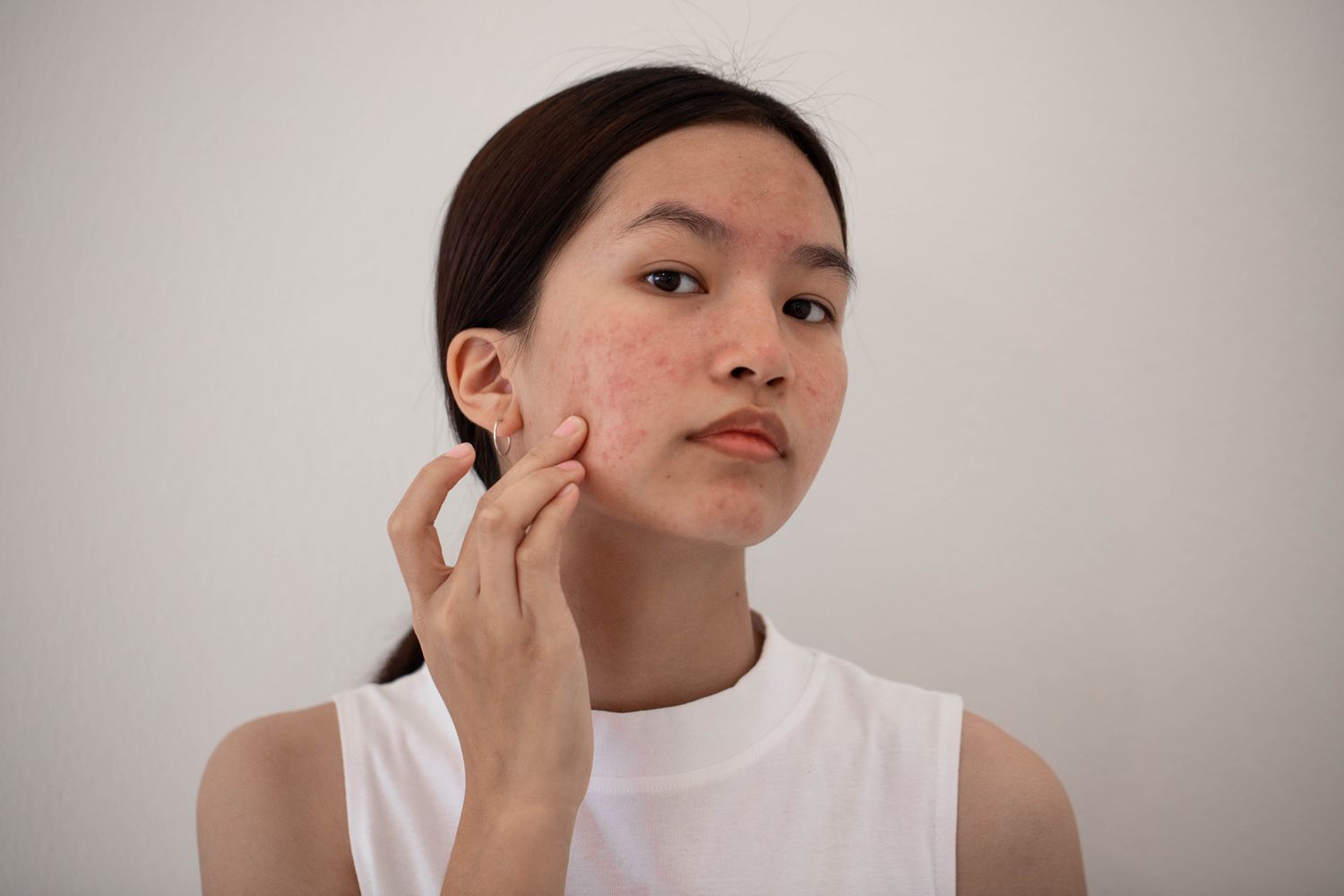Understanding Perioral Dermatitis: Experts Explain the Chronic Skin Condition

TikToker Alix Earle is known for sharing open conversations about beauty and health with her followers online. Writing that “real skin is beautiful,” Earle shared on her TikTok that she has been diagnosed with an inflammatory skin condition called perioral dermatitis.
In a video posted on June 12, Earle showed her skin with and without a blurring filter on TikTok, encouraging her audience not to compare their skin to what they see on social media. With the filter off, viewers can see that the influencer has a rash between her nose and mouth.
“Perioral dermatitis is kind of a tricky rash—we don’t entirely know why people get it,” Max Vale, MD, clinical assistant professor of dermatology at the University of Washington Medicine, told Health.
The rash can appear like something between eczema and acne, Vale explained. It’s most common in young adult women like Earle, and usually shows up around the mouth, he said.
Earle has previously documented her experience taking Accutane for acne, and though perioral dermatitis may resemble acne, the two aren’t necessarily related. Though there are a number of things that can trigger or exacerbate the rash, the actual cause behind perioral dermatitis is still unknown.
Here’s what experts had to say about identifying and treating perioral dermatitis, as well as tips every person should know to help keep their skin clear.
Perioral dermatitis is rarely a severe condition, but it can certainly be a nuisance for those that develop the condition.
“The rash generally presents as tiny, red bumps—called papules or pustules—and may produce itching or burning, and stinging,” John Wolf, Jr., MD, professor and chair emeritus of the Department of Dermatology at the Baylor College of Medicine, told Health.
Unlike acne, perioral dermatitis does not cause blackheads or whiteheads, Wolf said. The inflammation and bumps may actually put it more in line with rosacea—perioral dermatitis isn’t a type of rosacea, but the two can almost be thought of as “first cousins,” said Wolf.
The rash is typically found around the mouth, but other areas may also be impacted—someone might be diagnosed with periocular dermatitis if the bumps are around their eyes, or periorificial dermatitis if the rash is around the mouth, nose, and eyes, Wolf and Vane said.
Due to the fact that there’s no one cause behind the rash, it can be difficult to treat, Wolf said. There are also a myriad of potential triggers.
“It seems to be some kind of skin barrier problem, [and] hypersensitivity, so to speak—the immune system is kind of going crazy on the skin, or acting up,” Vane said.
Primarily, the condition seems to be triggered by the use of certain skincare products. In particular, Wolf said, adding a steroid cream to a person’s skincare routine can cause perioral dermatitis outbreaks. This can happen even after a cream or ointment appears to help at first, Vane said.
Perioral dermatitis can also be triggered by one or multiple new skincare products that the skin doesn’t respond positively to. Particularly, thicker, greasy face creams can cause problems.
Products unrelated to skincare can also sometimes be the culprit. Some nasal allergy sprays—because they contain a steroid—might cause a perioral dermatitis outbreak in some people, Vane said. Others might have the rash triggered by certain types of toothpaste, the experts added.
The possible triggers don’t stop there. It’s plausible that diet or hormonal changes have something to do with perioral dermatitis outbreaks, Wolf said. Mask-wearing during the pandemic may have also triggered more cases of perioral dermatitis, Vane said.
With so many potential triggers of perioral dermatitis, the rash can be difficult for doctors to treat.
“There’s no one cause that you can go after and eliminate. It means that the name of the game in treating or managing perioral dermatitis is control,” Wolf said.
He also explained that the condition often goes away completely, but not necessarily because of dermatologist intervention. Sometimes, the skin just needs time to heal.
Even though perioral dermatitis can’t necessarily be cured, there are still medications available to patients that can help clear up the rash.
While perioral dermatitis is not caused by bacteria, Wolf explained that antibiotics are a popular medication choice since they reduce inflammation. Earle revealed on TikTok that she’s been prescribed Metrogel (metronidazole). Vane described this as a topical rosacea medication that is frequently used to treat perioral dermatitis.
According to both Vane and Wolf, there are also non-steroidal anti-inflammatory creams that might help. In some cases, a doctor may prescribe oral antibiotic medications—in more severe cases, someone may even be given Accutane to clear up their perioral dermatitis, Wolf explained.
Eventually, perioral dermatitis will go away for most people, Vane said. Many will see it flare up once, or maybe multiple times if their skin is negatively reacting to some ingredient, but “it’s pretty rare to see later in adulthood,” he said.
However, it’s not always a simple process—it can take upwards of six months or longer for the skin to clear up.
“It’s a really stubborn condition once it starts,” Vane said.
Because treating perioral dermatitis can be so challenging, people should consider seeing a dermatologist if they’re concerned about redness or bumps on their face.
“Anytime you have inflammation on your skin—whether it’s redness and peeling, or pimples and pustules—it’s a good time to see a dermatologist,” said Wolf.
However, if perioral dermatitis is simply the skin overreacting to some sort of change in a skincare routine, it might go away once someone stops using the product. It’s a good reminder that sometimes the best way to take care of your skin is to keep it simple.
“We’re in a time right now when more and more people are really interested in taking care of their skin, which is awesome. The only downside to that is people are trying tons and tons of products,” Vane said. “And we do know that using a lot of active ingredients and using really, really heavy thick moisturizers can flare or cause perioral dermatitis.”
A gentle cleanser, moisturizer, and sunscreen are must-haves in any skincare routine, Wolf and Vane said. But adding more products to a routine does not automatically equal better skin.
If people are adding in more products with active ingredients, it’s best to do it one at a time, and very slowly, so that people can quickly identify and stop using any products that are causing issues, Vane said.
“I do think a lot of people see like, ‘Oh, this famous TikToker has beautiful skin and they have this 10-step routine—I’m going to go from washing my face with bar soap to using a 10-step routine all at once,’” said Vane. “Sometimes the skin needs time to adjust.”




